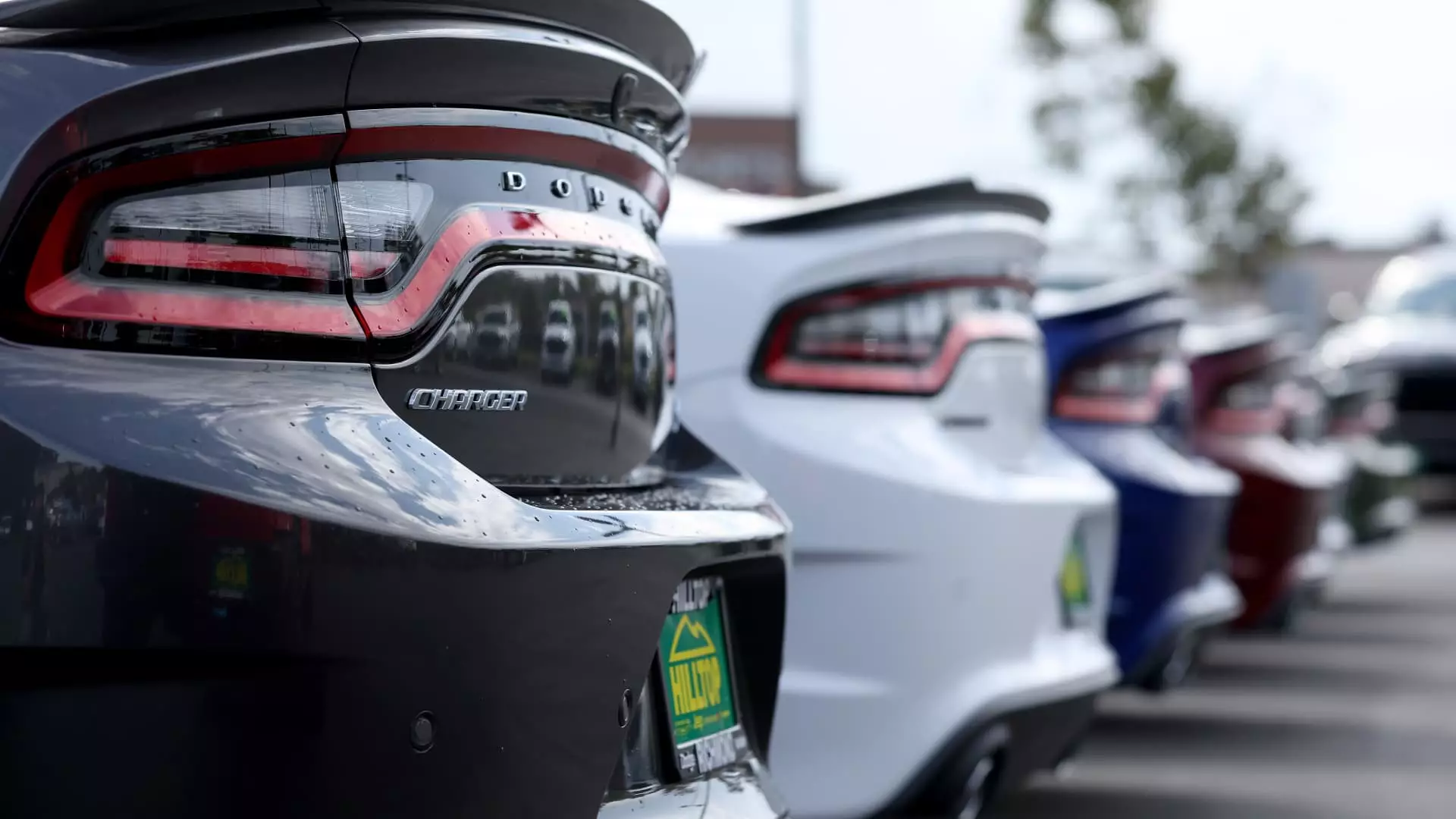The automotive sector in Europe has faced significant turmoil recently, with prominent car manufacturers like Stellantis and Aston Martin grappling with daunting challenges. This situation is emblematic of broader issues affecting the industry, particularly concerning market dynamics in China and rising competition. As these manufacturers adjust their financial outlooks, a ripple effect has been felt across the stock market, with investor confidence waning.
On Monday, Stellantis, the Franco-Italian automotive giant known for its diverse array of brands including Jeep and Maserati, shocked the market by revising its annual guidance for 2024 downwards. The company cited worsening “global industry dynamics” and intensified competition from Chinese manufacturers as key factors contributing to this revised forecast. This announcement came after a steady decline in anticipated sales across various regions, prompting a decline in stock price—a fall of approximately 13% at 10:15 a.m. in London.
Stellantis’s adjusted operating income (AOI) margin projection now stands between 5.5% and 7.0%, a sharp downgrade from previous expectations of achieving double-digit margins. Such drastic changes signify not only operational challenges but also a troubling forecast for the global automotive market as increasing supply and competition put immense pressure on revenue generation. The European automaker’s acknowledgment of an anticipated negative free cash flow between €5 billion and €10 billion further compounds concerns regarding its financial health in the near future.
In a troubling undercurrent to Stellantis’s woes, management has also faced criticism from its U.S. dealer network. Unfavorable decisions, including production cuts and slowing sales, have raised alarm among stakeholders. Moreover, ongoing legal scrutiny stemming from shareholder lawsuits alleging fraud over undisclosed inventory levels adds another layer of complexity to Stellantis’s recovery efforts.
Aston Martin’s Struggles With Margins
Alongside Stellantis, Aston Martin, a brand synonymous with luxury and American pop culture, is similarly facing dire challenges. The company announced a significant reduction in production targets—approximately 1,000 units—as it grapples with supply chain disruptions and the lingering impacts of macroeconomic instability in China. Directly connected to the prestige of their vehicles, Aston Martin’s anticipated earnings before interest, taxes, depreciation, and amortization (EBITDA) for 2024 fell below expectations.
The British luxury carmaker has now signaled that it does not expect to achieve positive cash flow in the latter half of this year, a concerning indicator of its operational efficacy. Aston Martin’s forecasted gross margin now predicts a performance below 40%, which is keenly disappointing considering the previous targets aimed at retaining this threshold.
Pivotal to its strategy, the company has expressed intent to overcome supply chain obstacles while also recognizing the potential inherent in the Chinese market, particularly if its economic conditions begin to stabilize. Yet, the question remains whether market sentiment can shift positively amidst the turbulence. Aston Martin stock experienced a staggering drop of around 23% early in the trading session, a reaction reflective of investor unease that has only intensified amidst the company’s financial recalibrations.
The dilemmas faced by Stellantis and Aston Martin are not isolated events. The entire European car manufacturing landscape appears under siege, as evidenced by Volkswagen’s recent decision to cut its own yearly outlook. Volkswagen has warned of significant inherent risks, particularly concerning passenger and commercial vehicle divisions.
With Europe’s new car sales falling behind pre-pandemic levels and domestic manufacturers struggling to keep pace with China’s burgeoning electric vehicle (EV) market, a critical crossroad has been reached. The push for EV adoption is markedly changing competitive dynamics in the industry, rendering the traditional European market increasingly vulnerable.
Amidst this transitional period, analysts from ING raise alarms about the ramifications of escalating EV sales driven by Chinese manufacturers. The urgency for European carmakers to innovate and adapt is palpable, as the status quo becomes harder to maintain.
As the European automotive sector grapples with significant profitability challenges and competitive pressures, the fate of Stellantis, Aston Martin, and their peers will depend on how swiftly they can respond to these evolving market conditions. The need for strategic realignment, innovation, and perhaps a real recalibration of expectations looms large. For now, fluctuating market confidence and declining stock values are clear indicators of an industry at a crossroads—one that must adapt to survive in a swiftly changing global landscape.

